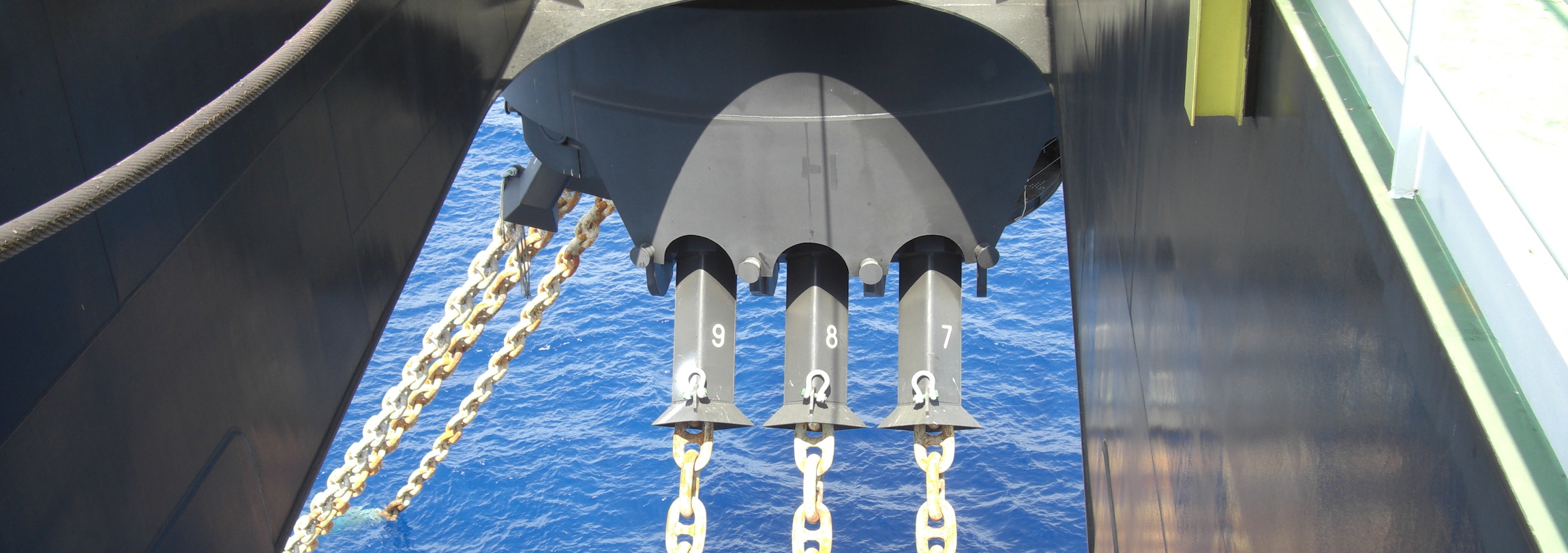![]()
AMOG has a long and proud history of being at the forefront of wire rope and mooring chain engineering through the conduct of Joint Industry Projects (JIPs) and the provision of client consulting services.
Following the success of the SCORCH JIP established by AMOG in response to an industry need for design guidance for addressing corrosion of chain and wire rope in tropical waters, participants demonstrated considerable interest in assessing the residual strength of damaged chains that had been examined during SCORCH. This request for increased understanding lead to AMOG establishing the Chain FEARS (Finite Element Analysis of Residual Strength) JIP.
Chain FEARS aimed to develop guidance for the determination of a rational discard criteria for offshore mooring chains subject to severe pitting corrosion which, based on current code requirements, would otherwise require immediate removal and replacement.
AMOG initially developed a Finite Element Analysis (FEA) method for determining the residual capacity of degraded chain which was validated against break test data. A key aspect of this research required establishing the original basis for the code specified Minimum Break Load (MBL) and Proof Load (PL), where a number of inconsistencies in the code formulations were identified and recommendations made for their revision.
AMOG further developed a first principles fatigue assessment method for determining the fatigue performance of as-new chain. This high fidelity non-linear multi-axial fatigue method, which accounts for significant fatigue influencing factors such as mean chain tension and material grade, was validated against a large sample of as-new chain fatigue test data in respect of fatigue life. It was demonstrated to provide good correlation in respect of failure location which is influenced by a number of input parameters not accounted for in the linear uni-axial analysis methods previously employed in the industry. This research also identified a number of inconsistencies in the code formulation for fatigue capacity with respect to both the size and grade of chain.
This validated first principles Chain FEARS JIP fatigue approach provided a solid and reliable basis for further AMOG research into establishing the residual fatigue life of corrosion and wear degraded mooring chain, and subsequent research by AMOG has demonstrated the method to correlate well with Out-of-Plane Bending (OPB) fatigue of as-new chain, the residual Tension-Tension (T-T) fatigue of corrosion pitted mooring chain and the fatigue damaging effects of chain-fairlead interaction bending.
A number of papers have been published on AMOG’s research into the residual capacity of mooring chain.
Through this chain research and client consulting work AMOG has developed an intimate understanding of the issues effecting offshore mooring chain installations, the residual strength and fatigue of degraded mooring chain and an understanding of the issue that contribute to mooring chain failure.
AMOG continues to develop practical methods for characterising chain corrosion degradation and to formalise rational discard criteria for in-situ assessment of degraded chain.
With this intimate understanding of the strength and fatigue behaviour of as-new and degraded chain, and with AMOG’s expertise in modelling and assessing mooring systems, AMOG provides advice as to the residual capacity of mooring chain for installations subject to corrosion and wear degradation and provides forensic failure investigation services in respect of mooring chain and mooring system failures.

